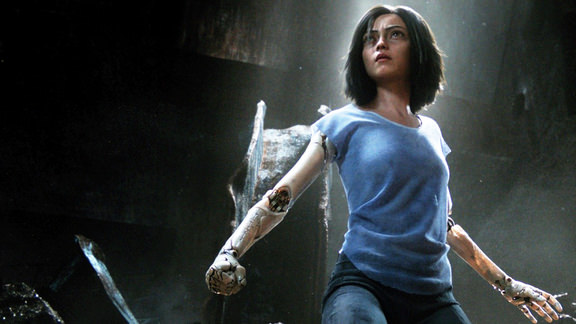
Be the first to get latest stories.
Follow Cemerlang's Telegram channel.
by Kevin C.
I was fascinated by robots; I still am. In the past few years, scientists have categorised robots into human robots, animal robots, androids and so on. Then, no thanks to “RoboCop” and “Terminator“, we are introduced to a hybrid called cyborgs that have appeared in their sequels and in other movies. These beings have both human and robotic body parts.
Just before we could sit back and take a deep breath, Hong Kong scientists shocked the world when they developed and activated the world’s first humanoid robot named Sophia in 2016. She took the world by storm. I suppose her name is the derivative of the word “sophisticated”. It indeed is, as Sophia’s artificial intelligence is amazing but she is not as human yet in terms of movement and speech. What’s after Sophia? How much more sophisticated could robots be?
The answer lies in the silver screen. Movies about machines that could talk, like Wall-E and C3PO, have gone through an evolution like never before. We’ve had many other robot-themed movies like Chappie, Real Steel and I-Robot that revolve around relationships between humans and machines. These machines are all created and intelligently programmed by humans, and are able to accomplish tasks although not as smooth as we homo sapiens. However, one recent movie I watched got me thinking about future beings.
James Cameron has directed and produced many blockbuster movies. In February 2019, he release his latest movie entitled “Alita: Battle Angel“. Don’t be fooled by its childish anime title. When I saw the trailer, I immediately “fell head over heels” with Alita, the protagonist, created using high-end computer-generated imagery (CGI). Apart from her adorable, large puppy-dog manga-looking eyes, two other features attracted me – she is very human with expressions of sorrow, anger, love and all. She also wears a self-healing nanotech Berserker Armour that clings to her body as it adapts to her character and ability. Not to mention, there is also a new kind of doctor – a Cyber Surgeon. It’s the best profession for those who are hemophobic, yet who persistently want to be in the medical field. Is Alita a glimpse of the future of artificial intelligence in robotics? Will scientists one day harness the electrical impulses that the synapses in the human brain generates to activate bionic limbs attached to a biological body? We already have electromechanical prosthetics now, so chances are, we could see a humanoid that is more refined than Sophia by the turn of this century, though it would likely not match the almost-human qualities that Alita has.

In fact, many of the new gadgets and technologies we see and use today are adaptations of the figment of someone’s imagination at one time. Remember “The Jetsons” cartoon? The Jetsons who lived in the future, had a robot maid named Rosie. This animated TV show was aired in the 60’s and 70’s. Now, nearly just six decades later, we have robot helpers at home and voice-activated vehicles, as well as self-driven ones. We also don’t type anymore – we touch and swipe to send messages and photos. I first saw this while watching “Minority Report“, seven years before the first iPhone OS 1.0 or the Samsung Galaxy series existed.
Nanotechnology is currently being used in industries. How would nanotechnology change artificial intelligence, robotics and humans a century from now? I wouldn’t be surprised if one day, our future generations would live among cyborgs – real life, not CGI ones. Humans have become more intelligent more quickly, so much so that they are able to create artificial intelligence. Looking at the advancement of AI technology and the speed at which technology changes, I doubt we have to wait till the year 2563 for a new cyborg friend. Crazy, huh?




Shazra Abdul Wahid
I watched Robocop in the 80s and wondered whether the technology would ever be as sophisticated as what it was portrayed in the movie. It is undenaible that unbelievable advances are made in such a short span of time.